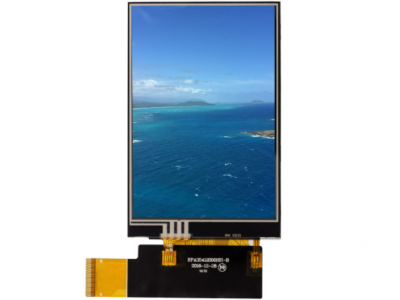Behind every screen of the devices we interact with daily—such as mobile phones, computers, and smartwatches—lies a crucial core technology: TFT. It may sound unfamiliar, but it is the “master commander” that enables modern displays to show clear and smooth images. So, what exactly is TFT in TFT LCD screens? What kind of little-known magic does it possess?
I. The Core Definition of TFT: The Precise Coordination of Millions of “Microscopic Switches” on the Screen
TFT, short for Thin-Film Transistor, is known as thin-film transistor. You can think of it as an extremely tiny electronic switch on the screen. The key point is that what we commonly refer to as TFT never exists in isolation. Inside every so-called “TFT screen” (e.g., TFT-LCD), there exists a vast array of TFTs—comprising millions or even tens of millions of these micro-switches, neatly arranged on a glass substrate. Each TFT independently and precisely controls a single pixel thA simple analogy: If each pixel on the screen is compared to a window, then the TFT in a TFT LCD screen is the smart switch that controls the degree to which that window opens or closes. It precisely determines how much light (from the backlight module) can pass through, ultimately defining the brightness and color of that pixel. The coordinated work of countless TFTs collectively forms the complete image we see before our eyes.
II. The Source of the Magic: From “Passive” to “Active,” the Revolutionary Work of TFT
The true magic of TFT lies in its realization of a revolutionary control method: “active matrix addressing.” This is a world apart from the clumsy “passive matrix” technology that existed before TFT.
The Dilemma Without TFT (Passive Matrix):
It was like using a grid of intersecting lines to control all pixels, which was inefficient and prone to signal crosstalk and motion blur.
The Intelligence With TFT (Active Matrix):
Each pixel has its own dedicated TFT switch. When a pixel needs to be driven, the control signal can precisely locate and command that pixel’s TFT to “turn on” or “turn off,” maintaining its state until the next refresh. This brings the following advantages:
Fast Response: TFT switches operate at extremely high speeds, significantly reducing motion blur in dynamic images on TFT LCD screens.
Lower Power Consumption: The state-holding characteristic reduces the overall energy consumption of TFT LCD screens.
III. Debunking the Myth: TFT ≠ A Type of Screen; It Is the “Underlying Brain” of the Screen
A common misconception is that “TFT is a type of screen.” In reality, TFT itself does not emit light nor produce color. It is essentially a sophisticated control system—the “underlying cockpit” or “core brain” of the screen.
The TFT-LCD screen, which we are most familiar with, is the complete display technology solution. In this case, the TFT array in the TFT LCD screen is responsible for precisely driving the alignment of liquid crystal molecules to control the passage of light from the backlight. Even in more advanced OLED screens, when manufacturing large-sized or high-resolution products, a TFT array is still required as the backplane circuit to accurately control the light emission of each OLED pixel. It can be said that without TFT technology, the high-definition, smooth TFT LCD displays we see today would not exist.
IV. The Evolution of the TFT Family: Material Innovation Drives Performance Leaps
The performance of TFT largely depends on the semiconductor material used in its manufacturing. Its evolutionary history is a journey of material innovation:
Amorphous Silicon (a-Si): The first mainstream TFT technology, with significant cost advantages but limited performance, making it difficult to meet high-end display demands.
Low-Temperature Polycrystalline Silicon (LTPS): A leap in performance, with high electron mobility, enabling screens to be more power-efficient and responsive. Widely used in high-end LCD and OLED screens.
In summary, the magic of TFT in TFT LCD screens lies in its ability to transform disordered electrical signals into orderly digital images that can be controlled with pixel-level precision. It is the unsung, precise engineer hidden beneath the glass panel. It is the coordinated work of these millions of TFT micro-switches that ultimately brings us the incredibly clear, vivid, and smooth digital visual world before our eyes. Understanding TFT in TFT LCD screens means understanding the cornerstone of modern display technology.
Post time: Oct-22-2025


